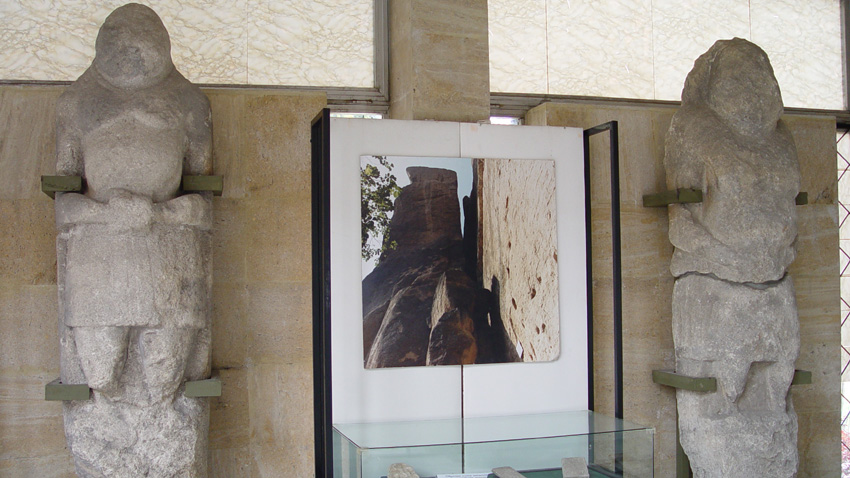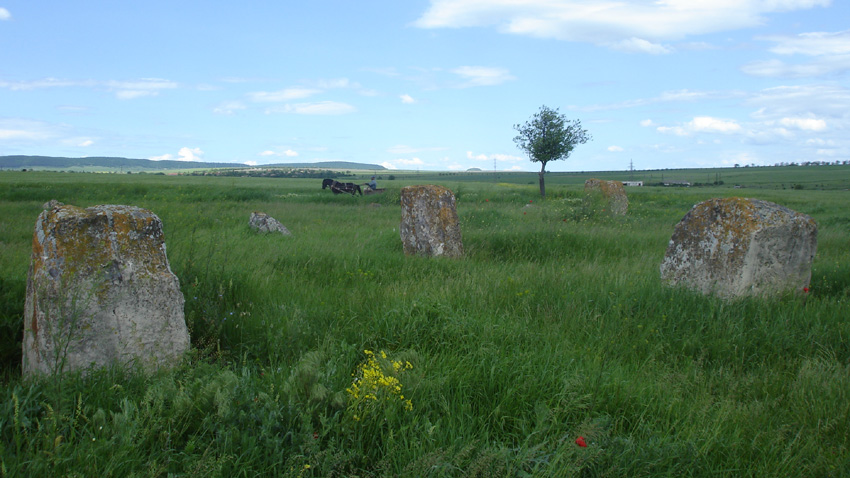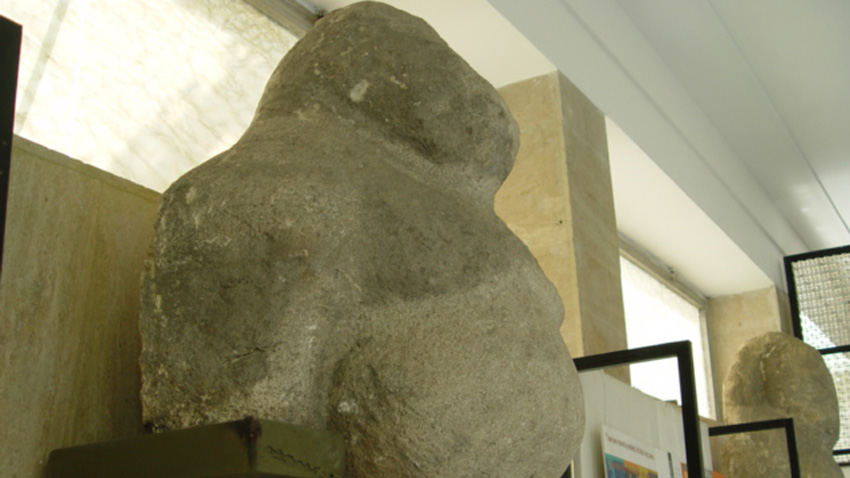In the 7th century the Proto-Bulgarians led by Khan Asparuh crossed the Danube to create a new Bulgarian state in 681 on the territory of today's northeastern Bulgaria. The first capital city was Pliska and next Preslav became capital. During that time the 'balvans' started to be seen in these lands. These are ancient stone figures. Their origin has long been a topic of discussions between scientists. the word 'blavan' can be found in texts dating to the First Bulgarian State (681-1018). According to some linguists, the word is from Turkic origin, meaning a statue, an idol, or pillar. According to others, the word means wrestler, a hero.
The word "balvan" can be applied both to the ancient statues known as "stone baba" and to the so called "devtash," as seen in the region of the first Bulgarian capital Pliska, says Associate Prof. Dr. Zarko Zhdrakov from the Department of Art Studies at the National Academy of Arts , who told us about one of the possible interpretations of the origin and purpose of these monuments:

"Stone babas remind of the Bodhisattvas in Tibet. In them one can see the symbols of fertility - large belly, big breasts. One sees prosperity represented through forms, and from Mongolia to the Black Sea these figures should represent the rulers. The word "baba" is of Turkic origin and means "father", "hero". We know that the Turkic people had a strong cult of ancestors. This is a sign in space that the Proto-Bulgarians left to show the presence of the ancestors. Two cult monuments from the 11th century - stone babas - a man with a helmet on the head and a long-haired woman with arms folded in front, holding a glass are one of the rare exhibits of the Regional Museum of Shoumen. They were discovered during archaeological works at a mound near the village of Tsarev Brod near Shumen”, associate professor Zhrdakov says and adds:
"We can call the devtash 'planted stones'. ‘Devtash’ is a local Turkish name for these stones, meaning 'stone-spirit'. They glorify the rulers and are placed near their tombs. Representing the spirits of the enemies who have been slain by the rulers, they accompany them to the afterlife to serve them."

According to Prof. Zhdrakov, the way the figures are placed in space is one of the arguments of researchers who think that Proto-Bulgarians are not of Turkic origin.
"The Bulgarian devtash stones are placed in the shape of a square while those in Altay are placed in rows. But we should not forget who the enemies were. In Central Asia, they were predominantly horsemen who moved in a row, while here we see a very creative interpretation of a victory over a Roman legion where there is square formation."
On the territory of Bulgaria many such stones have been found, mainly in the area of Pliska and Madara, where one of the fortresses near the ancient Bulgarian capital is located. It is not by chance that the two best-preserved stone babas that we know come from this region. But what gives us the reason to believe the Proto Bulgarian were the creators of these stone statues and not some other peoples who crossed our lands?

"This is the biggest problem - saying when exactly these were built. One of the solid reasons is their geographic location. They are located close to the Old Bulgarian capital Pliska. Some say a pair of statues are the work of later Turkic people inhabiting the Bulgarian lands, for which we have information - the Pechenegs, the Cumans. But there is little chance that they would have placed such stones in the Christian Roman Empire. It is logical to remember that the Byzantines would not keep them. This gives us reason to relate them to our early Proto-Bulgarian period since the time of Asparuh and Tervel. In the steppes, north of the Black Sea, a large number of such monuments has been found. Most of them are not in their original places, so it is hard to tell their links. There is a collection in the Poltava lapidarium. In general, these stones are regarded by Russian explorers (mostly archaeologist Svetlana Pletnjova) as the work of Cumans and possibly Pechenegs. But other researchers associate them with an earlier period," associate professor Zhdrakov says in conclusion.
English: Alexander Markov
Photos: courtesy of Dr. Zarko Zhdrakov
Priest Lyubomir Bratoev is a direct participant in the events of t he founding of the Bulgarian Orthodox Church community in Berlin . He came to the capital of East Germany in the late 1980s as a doctoral student. And, like a typical Orthodox Christian..
After nearly 35 years, the Bulgarian Orthodox Church Community in London has its own church in the central part of the British capital, in close proximity to the Bulgarian Embassy. There, in the prestigious Kensington district, next to Hyde Park and..
Meatfare Sunday in 2025 will be remembered as a major celebration for the Bulgarian Orthodox Church and the entire Bulgarian community in the United Kingdom. The "St. John of Rila" Orthodox Church, built with funds from the Bulgarian state and with..
Priest Lyubomir Bratoev is a direct participant in the events of t he founding of the Bulgarian Orthodox Church community in Berlin . He came to the..

+359 2 9336 661
